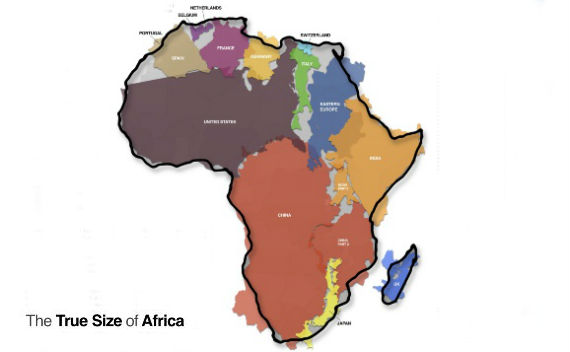Africa Is Big(ger) Than You Thought
More on:

In my elementary school classrooms, as in most, the Mercator projection was the dominant depiction of the world. Canada, Greenland, and the (then) Soviet Union were huge and out of proportion (which in the last case may have been encouraged by our perception of the “Red Menace”). So was Antarctica. In comparison, Europe, the United States, and Africa were well-proportioned but small. Perhaps this elementary school image of the world contributes to our typical under-sizing of Africa, at least in our imaginations.
Our intern has recently pointed me to a map of Africa, created by Kai Krause, that graphically illustrates just how big the continent really is. Krause super-imposes over the continent other countries whose scale we can more easily grasp. For example, the United States fits nicely into sub-Saharan West Africa. If North Africa is included, there is also room to add Spain, Portugal, France, Germany, Italy, and the United Kingdom. All of China stretches only from central to southern Africa. And India nicely fills the Horn and Ethiopia.
This map highlights certain obvious realities. First, Africa’s coastline proportionate to its land area is much smaller than that of other continents. That means, among other things, many fewer harbors – with consequences for landlocked countries as well as the development of long distance trade.
The second is how ludicrous it is to generalize about “Africa.” We bristle when our European friends generalize about the United States, with all of the differences between, say, New York and Mississippi, even though we share a genuine common identity. How much more ludicrous to generalize about a continent with cities as different as Mogadishu, Cape Town, and Dakar – as far apart by air as Beijing and Lhasa or, say, London and Los Angeles, and with no common identity.
More on:
 Online Store
Online Store